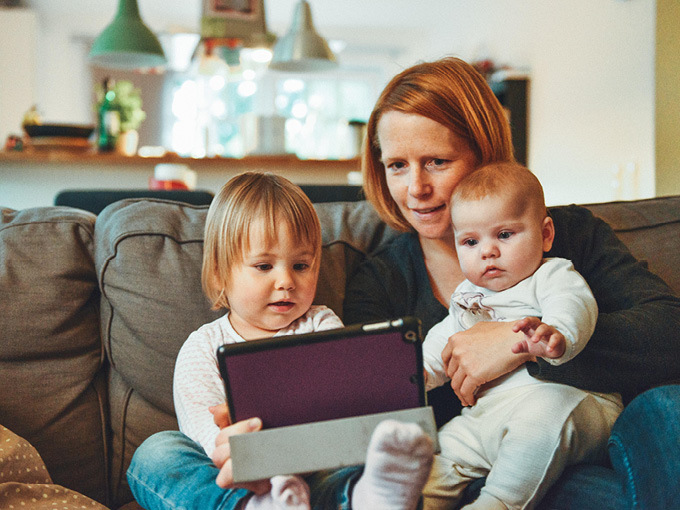By Maxine Fox
For many households, COVID-19 has seen parents working from home more often, and children having an often disrupted home-school experience. Our changing and evolving environment and circumstances have led to an acceleration of certain needs for kids and parents when it comes to content. In particular, there’s been a growing demand for content that both educates and entertains, as well as fills the demand of the entire family at once.
Edutainment’s big moment
The need for more educational content was already on the rise among families—a trend that predates the current pandemic—but COVID-19 has accelerated this demand. In our “Kids and the Screen: Changing the Channel” research, we have seen viewing in the kids learning genre double over the past three years.
Parents have been using screens and educational content to subsidize at-home learning, and it isn’t only school-aged children for whom this has been important. The preschool market—where parents have more control over of what their child watches—is also seeing a rise in educational content. Beyond bolstering kids’ traditional education, edutainment is also helping to reduce that parental screen-time “guilt gap.”
We asked parents how their kids’ viewing behavior has changed since the pandemic began, and more than two-thirds (68%) said their children now watch more educational/learning content than they had previously.
Educational content that is binge-able, available on a platform deemed safe by parents, and capable of keeping the child engaged are the ultimate desires when it comes to the edutainment space. Platforms that are considered most safe by parents, such as Netflix, are ring -fenced and tailored to kids, allowing young viewers to navigate independently to their favorite content with ease.
What this space does best—and why it is growing so fast—is speak to both the parent through educational benefits and the child through content that entertains, satisfying a dual need. The most popular “edutainment” series in the UK, as identified by families, currently include Peppa Pig, Horrible Histories, Cocomelon and Blippi.
Family takes center stage
This is not to say that content that purely entertains is no longer valued. Fresh new content the whole family can watch together taps into a the new reality that “family time” is a daily activity.
With families now increasingly spending viewing time together, there have been some real platform winners catering to this need, particularly within the SVOD space. Notably, in April this year, we saw Disney+ make up 9% of all viewing recorded in our “Kids and the Screen” study. Mere weeks after launching in the UK, the House of Mouse’s streamer achieved parity with the more-entrenched Amazon Prime.
So why has it been so successful? Disney+ is satisfying a different demand compared to the likes of Netflix, providing families with exactly what they want—new and fresh (or occasionally older nostalgic) content that they can watch together. Whereas Netflix is often watched independently by children, with episodes of shows dominating, Disney+ is being watched by the whole family and primarily for films, with these genres making up two-thirds of all viewing across the platforms.
Both platforms are tapping into kids’ love of cartoons and animation, with 71% of animated film content viewed through Disney+ and nearly half of animated series viewed through Netflix. However, Netflix still maintains market share with its popular preschool content, making up 20% of all viewing on the platform, with hit shows such as Cocomelon and Little Baby Bum driving this success.
New needs are here to stay
Recent events have meant that for many families, daily routines and practices have become more fluid and open to change. We know that even before COVID-19, there was a move in the UK away from scheduled viewing. In our research, live content has seen a 10% decline in viewing among kids ages three and up. This has only been exasperated in lockdown.
In terms of being entertained as a family, this has always had its place, particularly viewing family-favorite shows together on a Saturday night. However, what we have seen during COVID-19 is this increased need to be entertained as a family playing out more consistently throughout the week. Although viewing will shift back to some sort of routine, solo viewing is unlikely to return to its pre-COVID levels as flexible work is set to continue for many, and regional lockdowns are either currently in place or on the horizon in the UK.
As a result of this, we predict that we will see SVODs like Netflix continuing to grow their overall share of the kids and family market, with our research indicating that they already make up a quarter of all kid viewing. Within this space, key platforms Disney+ and Netflix are currently able to co-exist, complementing each other on these content needs; however, there is a question about whether households will become overwhelmed by subscriptions and need to reduce household expenses. In this scenario, only the strongest will survive, and Netflix has the benefit of time on its side!
Maxine Fox is managing director at Giraffe Insights.
The “Kids & the Screen: Changing the Channel” study provides a complete viewing picture for kids ages two to 12, recording more than 90,000 viewing occasions. Giraffe speaks to 4,000 kids each spring and fall, capturing weekday, weekend, holiday and term-time viewing. As part of the “Little Voices: Big Impact” report, Giraffe also surveys 550 kids ages two to 12 and their parents monthly (3,300 kids and parents each year). This provides regular insight into the world of kids, and an understanding of parents’ purchasing behavior.
Photo by Alexander Dummer on Unsplash






















